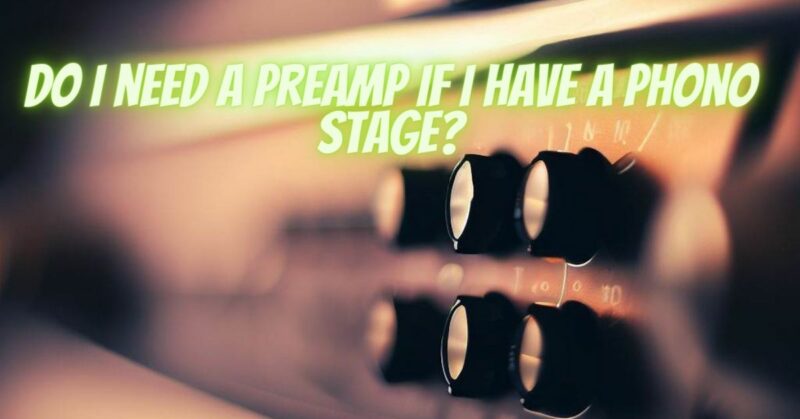Vinyl records have seen a resurgence in popularity, captivating music enthusiasts with their rich and authentic sound. When setting up a turntable, you may wonder whether you need a preamp if your turntable already has a built-in phono stage (phono preamp). In this article, we’ll explore the roles of preamps and phono stages, clarify their differences, and help you understand when each component is necessary for vinyl playback.
Understanding Phono Stages (Phono Preamps)
A phono stage, also known as a phono preamp, is a dedicated component in vinyl playback systems. Its primary functions include:
- Equalization (RIAA Curve): During the recording of vinyl records, a specific equalization curve known as the RIAA curve is applied to optimize the recording process and reduce noise. The phono stage reverses this curve during playback, restoring the audio to its original form. This ensures that the sound you hear from your vinyl records is balanced and accurate.
- Impedance Matching: Phono cartridges have unique impedance characteristics. A phono stage is designed to match the impedance of the cartridge, ensuring that the signal is accurately transferred to the amplifier or receiver.
- Signal Amplification: Some phono stages include a built-in preamplifier to boost the weak signal generated by the cartridge, making it suitable for amplification by an amplifier or receiver.
Understanding Preamps
A preamp, or preamplifier, is a fundamental component in an audio system that performs several critical roles:
- Signal Amplification: Turntables produce a weak electrical signal from the stylus tracking the grooves on a vinyl record. A preamp is used to amplify this weak signal to a level suitable for further amplification by an amplifier or receiver.
- Equalization (RIAA Curve): Like a phono stage, some preamps include the ability to reverse the RIAA curve, restoring the audio to its original form.
- Impedance Matching: Phono cartridges have unique impedance characteristics, and a preamp is designed to match the impedance of the cartridge, ensuring optimal performance and accurate reproduction of sound.
Do You Need a Preamp If You Have a Phono Stage?
The necessity of a preamp when you already have a phono stage depends on several factors:
- Built-In Preamps: Some turntables come equipped with a built-in preamp (preamplifier). In such cases, you typically don’t need an external preamp. Your turntable’s built-in preamp will perform the necessary signal amplification.
- External Phono Stages: If your turntable lacks a built-in preamp but includes a dedicated phono stage, you may not need an external preamp. The phono stage will handle both equalization and signal amplification.
- External Preamp: If your turntable has neither a built-in preamp nor a dedicated phono stage, you will need an external preamp to amplify the weak signal generated by the cartridge.
- Improving Sound Quality: In some cases, even if you have a built-in preamp or phono stage, you may choose to add an external preamp to improve signal amplification and overall sound quality.
In summary, the necessity of a preamp when you have a phono stage depends on your specific turntable setup. If your turntable already has a built-in preamp or a dedicated phono stage, you may not require an external preamp. However, if your turntable lacks both, an external preamp is essential to amplify the weak signal from the cartridge for proper amplification by an amplifier or receiver. Additionally, some enthusiasts choose to add an external preamp to enhance sound quality, even when a phono stage is present. Understanding the roles and capabilities of these components will help you set up your vinyl playback system for optimal performance.

